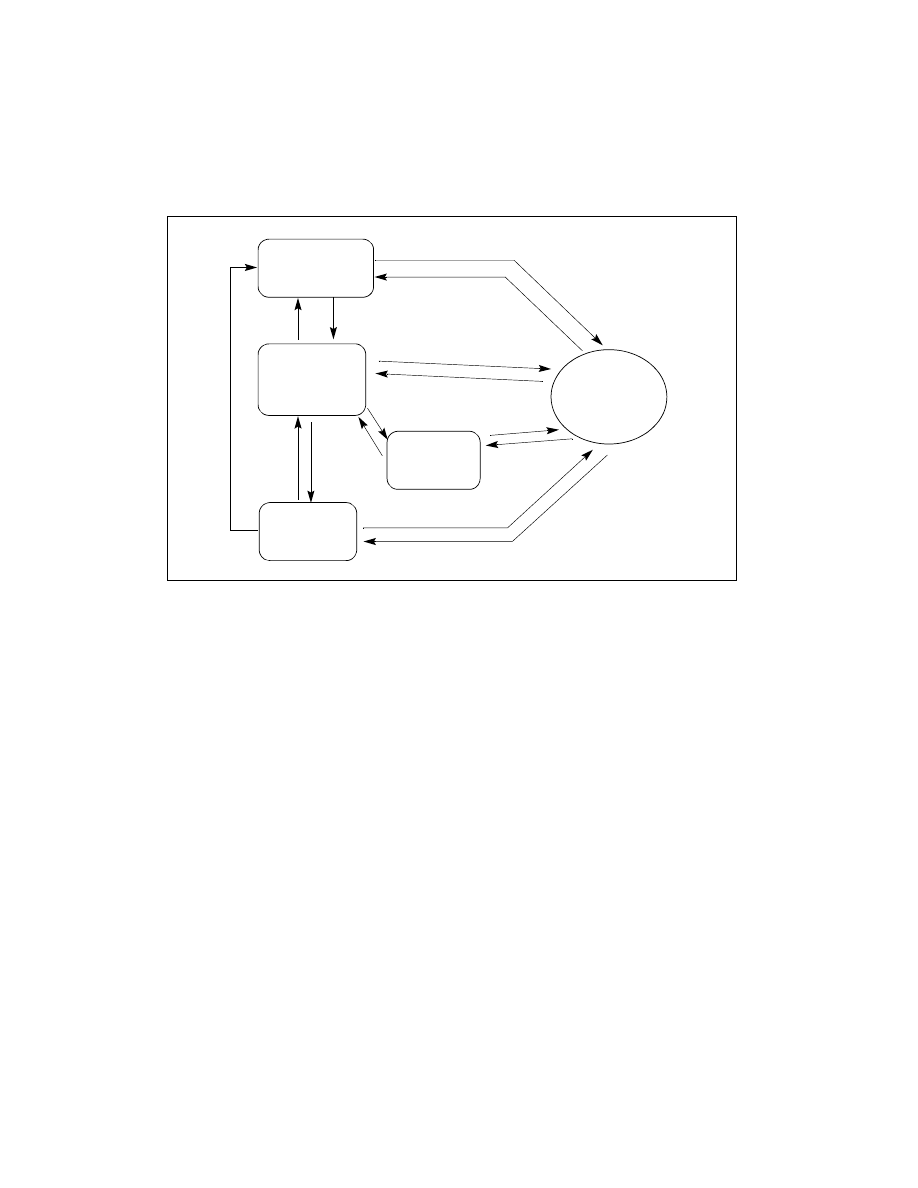
2-8 Vol. 3A
SYSTEM ARCHITECTURE OVERVIEW
Intel 64 architecture supports all operating modes of IA-32 architecture and IA-32e modes:
•
IA-32e mode — In IA-32e mode, the processor supports two sub-modes: compatibility mode and 64-bit
mode. 64-bit mode provides 64-bit linear addressing and support for physical address space larger than 64
GBytes. Compatibility mode allows most legacy protected-mode applications to run unchanged.
Figure 2-3 shows how the processor moves between operating modes.
The processor is placed in real-address mode following power-up or a reset. The PE flag in control register CR0 then
controls whether the processor is operating in real-address or protected mode. See also: Section 9.9, “Mode
Switching.” and Section 4.1.2, “Paging-Mode Enabling.”
The VM flag in the EFLAGS register determines whether the processor is operating in protected mode or virtual-
8086 mode. Transitions between protected mode and virtual-8086 mode are generally carried out as part of a task
switch or a return from an interrupt or exception handler. See also: Section 20.2.5, “Entering Virtual-8086 Mode.”
The LMA bit (IA32_EFER.LMA[bit 10]) determines whether the processor is operating in IA-32e mode. When
running in IA-32e mode, 64-bit or compatibility sub-mode operation is determined by CS.L bit of the code segment.
The processor enters into IA-32e mode from protected mode by enabling paging and setting the LME bit
(IA32_EFER.LME[bit 8]). See also: Chapter 9, “Processor Management and Initialization.”
The processor switches to SMM whenever it receives an SMI while the processor is in real-address, protected,
virtual-8086, or IA-32e modes. Upon execution of the RSM instruction, the processor always returns to the mode
it was in when the SMI occurred.
Figure 2-3. Transitions Among the Processor’s Operating Modes
Real-Address
Protected Mode
Virtual-8086
Mode
System
Management
Mode
PE=1
Reset or
VM=1
VM=0
PE=0
Reset
or
RSM
SMI#
RSM
SMI#
RSM
SMI#
Reset
Mode
IA-32e
Mode
RSM
SMI#
LME=1, CR0.PG=1*
See**
* See Section 9.8.5
** See Section 9.8.5.4